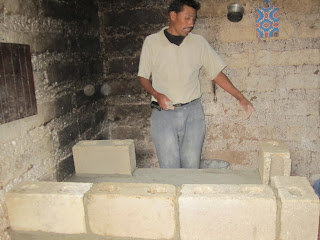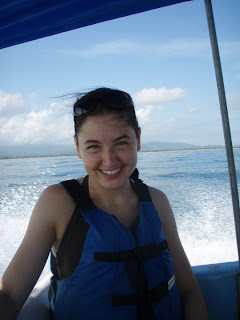I have now
been struggling to learn a Mayan language for a year. Admittedly, I spent five
or six months working on K’iche’ and then in June switched over to Q’eqchi’.
Moving from one language to the other felt how I imagine it would be to switch
from Spanish to Portuguese after taking only one semester. The pronunciation is
mostly (but not wholly) the same, the grammar is similar, and there are just
enough vocabulary words that are the same to keep you confused. My first
teacher had almost no experience teaching K’iche’ and so was long on patience
but short on structure; my current teacher has been teaching Q’eqchi’ for over
a decade and is long on structure but somewhat set in her ways. My class
sessions are dominated by me filling my notebook with dictations from my
teacher on vocabulary and grammar, but very little verbal practice. Still,
living in the community gives me opportunity for practice and most of the fault
for my slow progress is my own lack of discipline to study.
In the
beginning, the most difficult thing for me was learning to distinguish between
different consonant sounds, and to then be able to make them accurately. In
Q’eqchi there are six different letters that can make a sound like a “k” to the
untrained ear.
- Q – Sounds like you’re clearing your throat
- Q’ – A click in the back of the throat
- K – Sounds like a normal English “ck”
- K’ – A forceful sound off the roof of the mouth
- Y – Depending on where in a word it is, it may sound like
the “cu” in “cue” followed by other vowels, or it may act like a normal
“y”.
- W – Depending on where in a word it is and its relation to
vowels, it may sound soft like the “w” in “bower” or it may sound like the
“coo” in “cool”.
The next
hurdle was vocabulary. As with the classic example of the many names for
different types of snow in the Inuit language, I have found that there are many
distinctions between types, stage of development, and preparations of corn that
I never would have considered creating a new word for before. Likewise there
are different verbs for “to carry” based on if it is done in the arms, on the
back, on top of the head, or on the shoulders.
One of the
areas I’ve mostly given up on is the myriad of terms for people in the family.
For one thing, people usually don’t introduce themselves to me with any
explanation for how they are related to anyone else, so I don’t hear the words
used much. For another, it’s just confusing. In the US relationship titles are usually
determined by the gender of the person spoken about (a female child is a
daughter of her parent; a male child is a son of his parent, although cousin is
gender neutral). In Q’eqchi’, relationship titles vary by the gender of both
the speaker and the person spoken of (a female child is a ko’ to her mother, but a rabin
to her father; a male child is a yum
to his mother, but a alal to his
father). In the case of siblings, titles vary by the gender of the speaker,
gender of the subject and the age relation between the two. Thus, a girl’s
older sister is chaq’na’ but her
younger sister is iitz’inixq, while
her older brother is as but her
younger brother is iitz’inwinq. On
the other hand, a boy’s older brother is as
but his younger brother is iitz’in,
and a boy’s older sister is anab’ but
his younger sister is ch’ina anab’
There is
also the inverse problem in which words I consider vitally different are lumped
into one term in Q’eqchi’. For example, one verb, wank means to live, to have, and to be. You have to figure out
which one is being used through context. More frustratingly, ajok means both to want and to need.
Thus, I have no way of explaining, “I want to eat another cookie, but I don’t
need to, so I won’t.” Nor, on a cold morning, can I complain, “I need to take a
bucket bath, but I don’t want to.” I mean, really, how do you raise a child to
understand the difference between wants and needs if there isn’t a distinction
between the two in your language?
For all my
griping, I do like learning Q’eqchi'. I signed up for this, after all. I
savor the little victories of making it through small talk when I meet a woman
I know on the road. I like breaking out
a new set of vocabulary words with my host family and seeing them exchange
glances. “She finally learned ‘slow’ and
‘fast’!” their looks seem to say. When I
can more or less follow where we are on the agenda in meetings, or I get the
gist of what the people next to me in the microbus are saying, I congratulate
myself. It’s been more than ten years
since I was at this beginning stage with Spanish, so it took a bit to resign
myself to being a true beginner again. Now that I can explain my travel plans to my host mother and set up a play
date with my host siblings, I think I’m almost ready to graduate back out of
beginner status.





















































